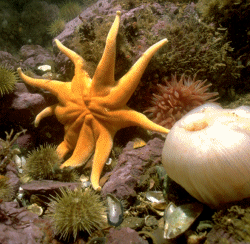Find fellowships, conferences, grants and awards deadlines, workshops and networking opportunities, crowd-sourced leads to job banks, reporting toolkits, hundreds of MOOCs and more. GO >>

Census of Marine Life scientists released an inventory of species distribution and diversity in 25 key global ocean areas.
The top 5 waters with the most biodiversity are Australia and Japanese (which each feature almost 33,000 known species), China, the Mediterranean Sea and the Gulf of Mexico.
Named species range from 2,600 to 33,000 but average about 10,750 across the areas inventoried.
Summaries of the findings are housed in The Public Library of Science's (PLoS) collection, Marine Biodiversity and Biogeography — Regional Comparisons of Global Issues, released on August 2, 2010.
"The papers describe the physical, geological, chemical, and biological characteristics of each region, provide a brief history of research and species discovery, and give insight into the role of Census activities in promoting and synthesizing this information. These articles bring together teams of regional experts to identify strengths and gaps in taxonomic capacity and ecological knowledge, potential focal areas for biodiversity research, and threats to marine biodiversity that span fishing disturbance, habitat destruction, invasive species, pollutants, and climate change. They provide species inventories and document patterns of endemism within different taxa, and they identify biogeographic regions and taxonomic groups with the greatest potential to yield new discovery. Individually these articles provide insights that can reveal regional needs and promising directions for future research; collectively they establish a baseline for further global assessments and identify mechanisms for future international collaboration. The collection includes two overview articles: an introduction (O'Dor et al.) and a global synthesis (Costello et al.) of the national and regional articles that follow."












 Advertisement
Advertisement 



